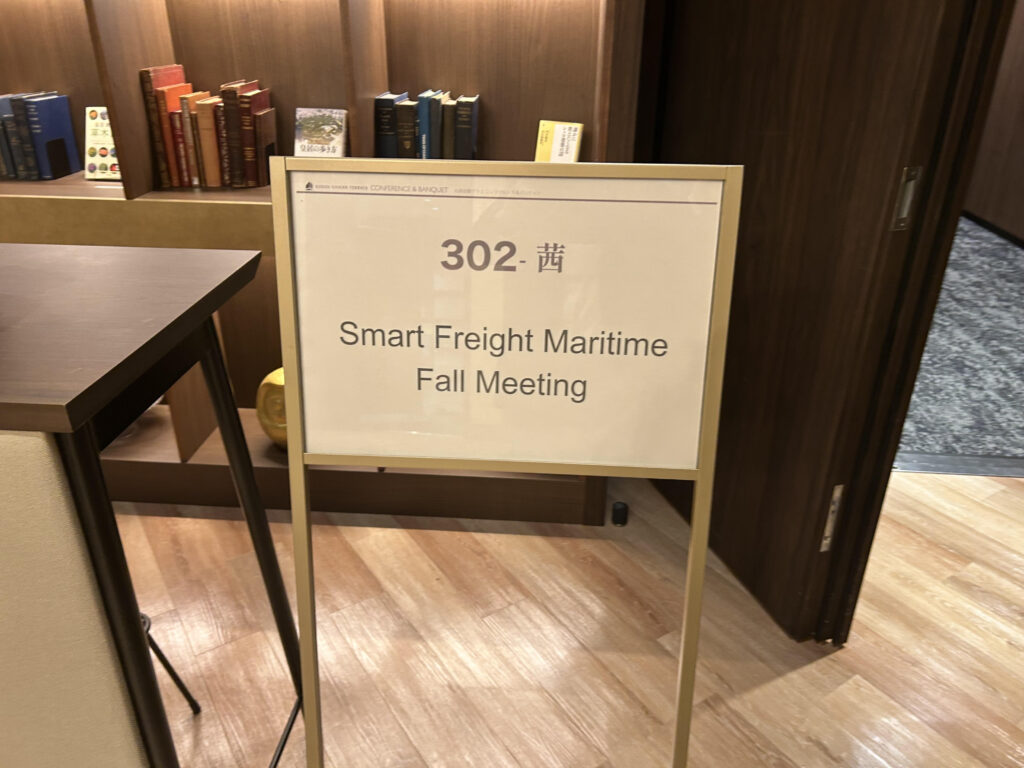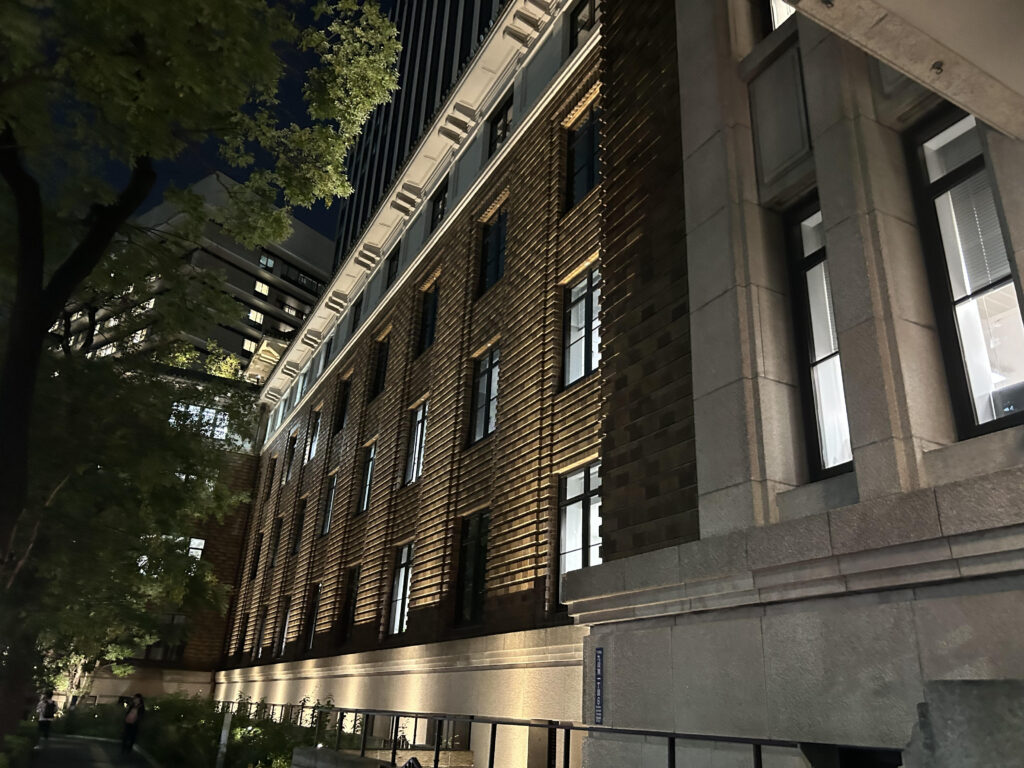On October 17, 2024, the Smart Freight Centre (SFC), a non-profit organization based in Amsterdam, Netherlands, hosted a meeting of the Global RORO Community (GRC) at the Kudankai-kan Terrace in Chiyoda, Tokyo.
Since its establishment in April this year, the GRC has been holding biweekly online meetings to discuss methods for calculating greenhouse gas (GHG) reductions for RORO vessels and car carriers. During this first in-person meeting, lively discussions took place intending to formulate a draft set of indicators for GHG reduction by the end of this year.
(Text by Hiro Yamamoto)
Photo courtesy: SFC, GRC
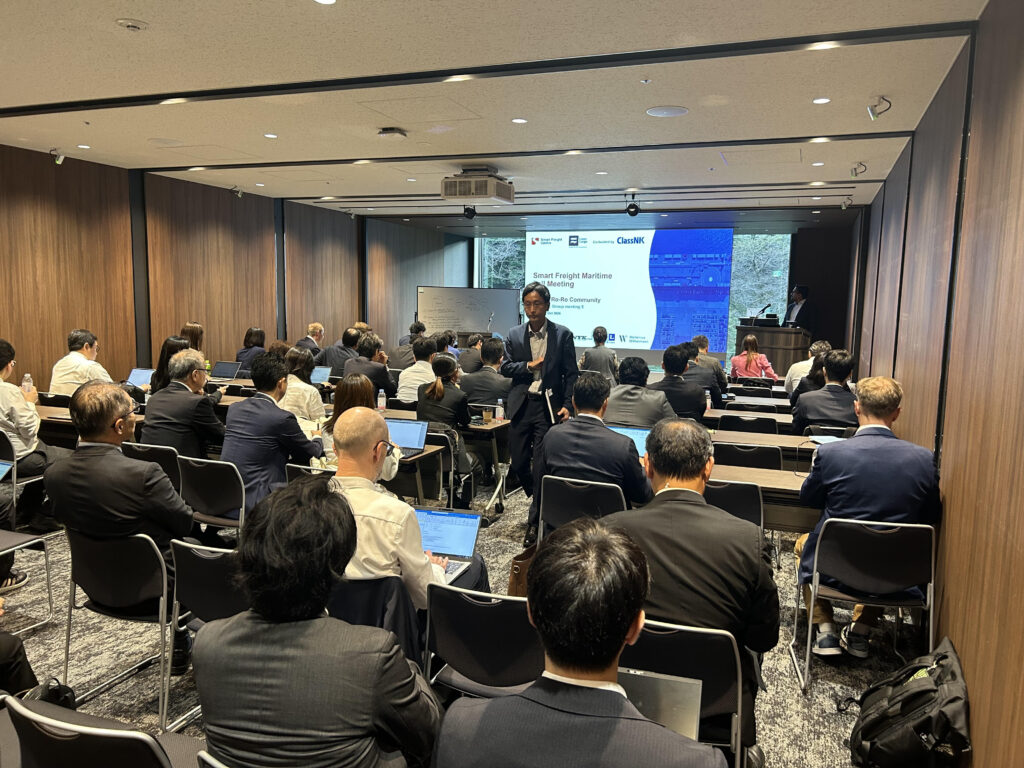
■Challenges in RORO Vessels and the Background of Indicator Formulation
Multiple shippers use automobile carriers and RORO vessels and call at numerous ports, leading to inconsistencies among companies in defining ballast voyages (voyages without cargo). This created the need for a standardized calculation method for GHG reductions and a unified definition of ballast voyages across the shipping industry.
In December 2023, the Nippon Kaiji Kyokai (ClassNK), NYK Line, and Wallenius Wilhelmsen (WW) agreed on the necessity of developing a unified GHG calculation method for RORO vessels and automobile carriers operating on long-haul routes. They sought cooperation from the Smart Freight Centre (SFC), which emphasized establishing international standards for GHG calculation in car carriers.
■Establishment of the GRC and Participating Members
In April 2024, under the leadership of SFC, the Global RORO Community (GRC) was launched, with MOL, NYK Line, and WW joining as initial members. ClassNK participated as an observer. By October, Eastern Car Liner (ECL), Gold Star Line, Neptune Lines, and Hyundai Glovis had also joined, representing about 60% of automobile carriers operating in international waters, based on the number of vessels.
■Discussion Focus and Calculation Method Proposals
Key proposals discussed included:
- Carbon intensity disclosure to shippers: Members could either (A) use the same calculation method as that employed for deriving the GRC average, or (B) calculate based on each company’s specific services.
- GRC average carbon intensity: This would be calculated across 24 common trade lanes, using a standardized definition and method for ballast voyages.
Yuki Ikawa, from MOL’s Car Carrier Division Sustainable Fleet Management Team, explained to members in English:
“The GRC average carbon intensity will be calculated by collecting data from each company on the carbon intensity of GRC’s common trade lanes, with SFC aggregating the results by lane. However, it is important to clarify that this is merely a benchmark to measure the decarbonization progress of the entire industry.”
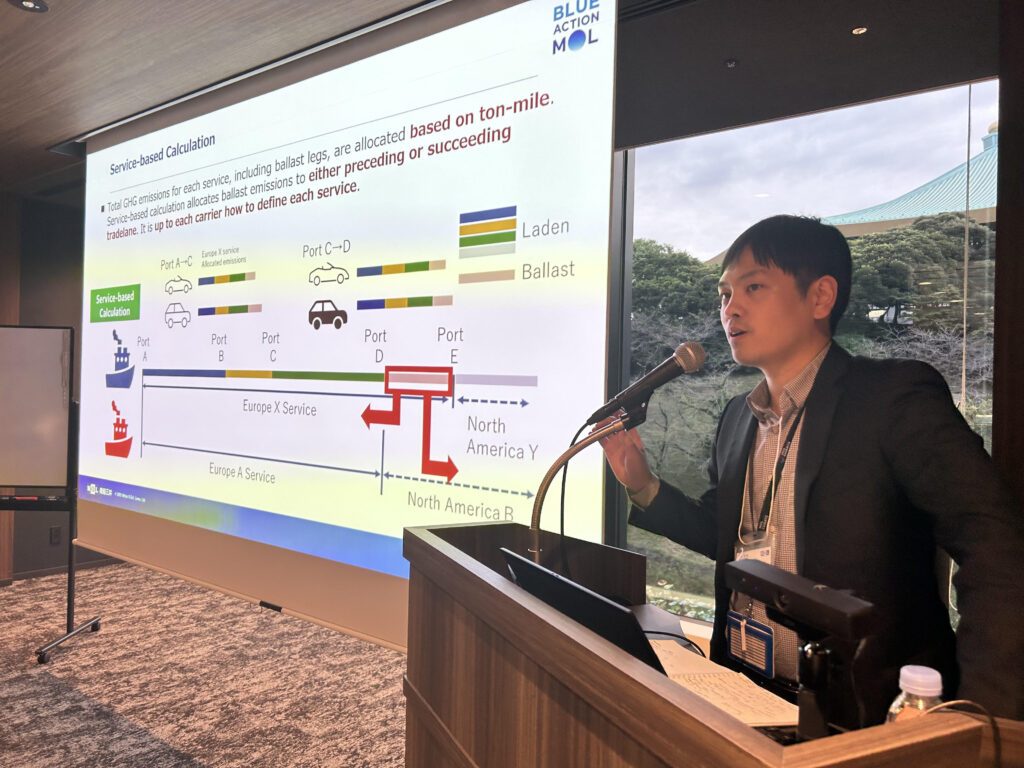
Koichiro Sunahata, Deputy General Manager of NYK’s Automotive Business Management Group, also addressed the members in English:
“We explored various options for distributing emissions from ballast voyages across trade lanes. Ultimately, the proposal for calculating the GRC average involves separating emissions from ballast voyages and evenly distributing them across all trade lanes by applying a specific conversion factor.”
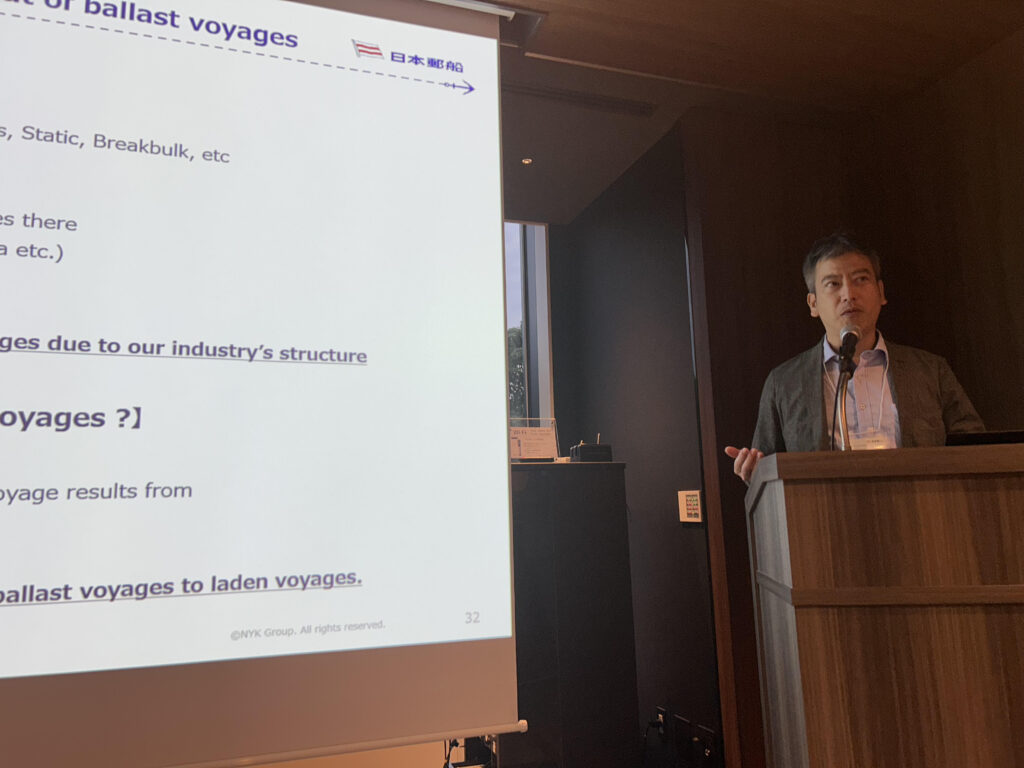
Yasuhuki Sakurai of WW highlighted their collaboration with a Norwegian startup:
“We identified 24 trade lanes to serve as the common lanes for GRC’s carbon intensity calculations. We will first determine these lanes’ carbon intensity and then report the industry average for each lane.”
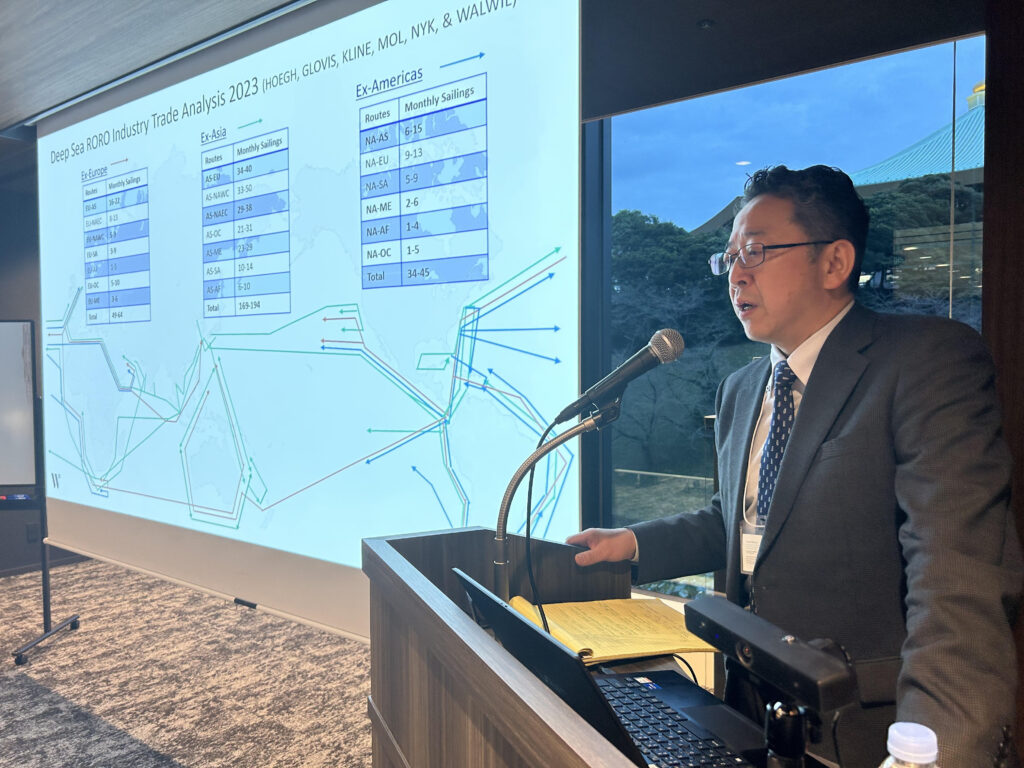
■Networking After the Meeting
During the networking session, Yoshiya Yamaguchi, Executive Vice President of ClassNK, gave a toast in English to the international participants:
“Under our partnership with SFC, NK is actively engaged with the GRC to establish standardized methods for calculating GHG emissions from RORO vessels in international shipping. Since its inception in April, GRC meetings have achieved significant progress.”
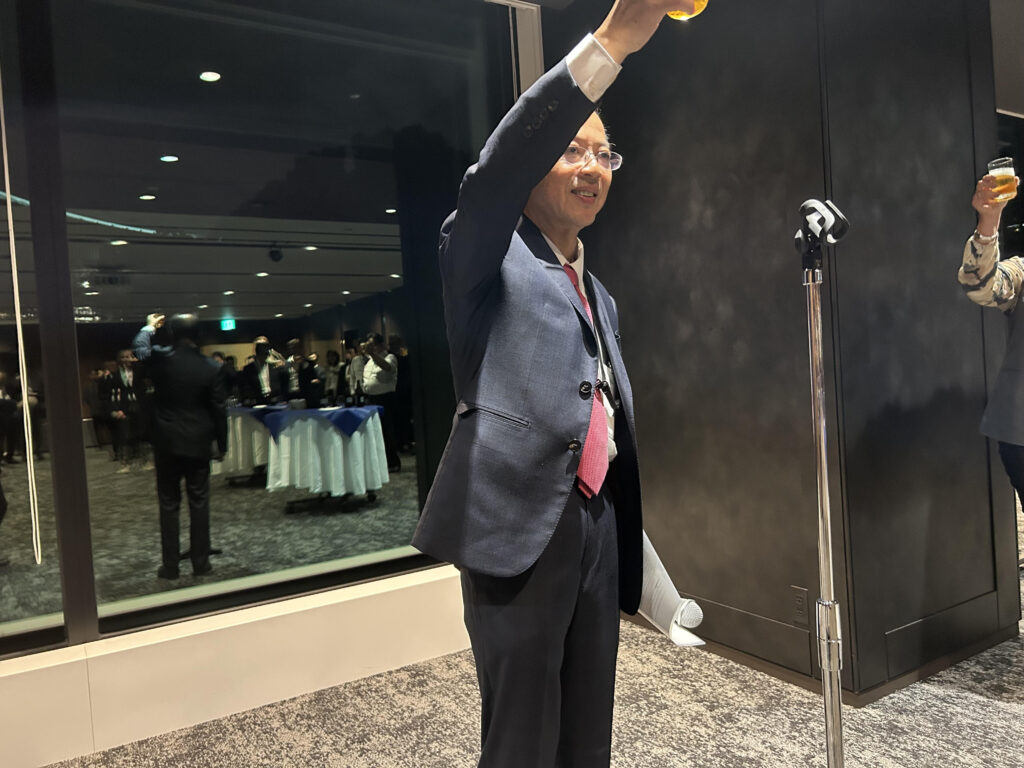
■About SFC (Smart Freight Centre): An international non-profit organization promoting measures to reduce GHG emissions. It provides guidelines for decarbonization in the logistics sector and enhances transparency regarding GHG emissions. SFC aims to reduce global freight transport emissions by one billion tons by 2030 and achieve zero emissions by 2050, contributing to the 1.5°C target of the Paris Agreement.
〆自動車・RORO船、GHG(温室効果ガス)削減に関する指標の試案を年内に策定目標。GRC(グローバルROROコミュニティー)東京会合を初の対面形式で開催。
オランダ・アムステルダムに拠点を置くNPO「スマート・フレート・センター」(SFC、Smart Freight Centre)は、2024年10月17日、東京都千代田区の九段会館テラスで「グローバルROROコミュニティー(GRC)」の会合を開催した。
GRCは今年4月の発足以来、隔週でオンライン会合を実施し、RORO船や自動車専用船におけるGHG削減のための算出方法について議論を進めてきた。今回、初の対面会合では、年内の指標試案策定を目標に、活発な議論が行われた。
(Text by Hiro Yamamoto)
Photo courtesy=SFC,GRC

■ RORO船の課題と指標策定への背景
自動車専用船やRORO船は、複数の荷主が利用する上、寄港地も多岐にわたるため、各社でバラスト航海(積載なしでの航海)の定義が異なるという課題があった。このため、海運各社間でGHG削減のための計算方法やバラスト航海の定義を統一する必要があった。
2023年12月、日本海事協会(NK)、日本郵船(NYK Line)、ワレニウス・ウィルヘルムセン(Wallenius Wilhelmsen、WW)の3社は、「遠洋航路に配船されるRORO船や自動車専用船についても、統一されたGHG算定方法を検討する必要がある」という共通の認識を確認し、SFCに協力を求めた。SFCもこれを受け、自動車専用船における国際的な算定基準の必要性を強調した。
※日本語記事の続きは日本海事新聞でお読みください。

